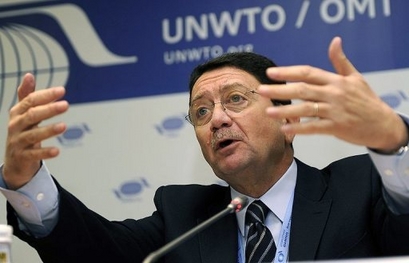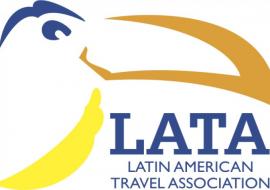Taleb Rifai: 2012 Tourism Arrivals Outlook “Poor Compared to 2011”

Taleb Rifai: 2012 Tourism Arrivals Outlook “Poor Compared to 2011”
International tourist arrivals grew by 4.5 per cent in the first eight months of 2011 to a total of 671 million (29 million more than in the same period of 2010), however the outlook for 2012 is for little if any growth.
The Northern Hemisphere summer peak season months of July and August showed encouraging results, with growth at close to four per cent over 2010, corresponding to an extra eight million arrivals. At 118 million, July saw the highest number of international tourist arrivals ever recorded in one month (August: 112 million).
Contrary to the trend in recent years, growth in arrivals during the first eight months of 2011 was higher in advanced economies (+4.9 percent) than in emerging ones (+four per cent), due largely to the particularly strong results of Europe (+six percent).
In Northern Europe (+seven percent) and Central and Eastern Europe (+eight percent), recovery gained momentum this year. The same is true for some Southern European destinations (+eight percent), which this year also benefited from the shift of travel away from the Middle East (-nine percent) and North Africa (-15 percent).
Contrasting with growing economic uncertainty, European Union destinations (+six percent) benefited strongly from this growth, bringing some relief for those destinations facing major economic challenges such as Greece (+14 per cent), Ireland (+13 percent), Portugal (+11 per cent) or Spain (+eight percent).
“Despite current volatility, international tourism is proving to be an important economic driver for many European economies, bringing much needed foreign exchange and helping to ease the pressure on their balance of payments,” said United Nations World Trade Organization (UNWTO) secretary-general Taleb Rifai. “UNWTO encourages European governments to support tourism and consider the sector as one that can back economic recovery given its capacity to distribute wealth and create jobs across the region,” he added.
In Asia (+six percent), destinations in South-East Asia (+12 per cent) and South Asia (+13 percent) remained the rising stars, with double-digit growth rates, while arrivals slowed in North-East Asia – partly due to the decline in Japanese outbound tourism – and in Oceania (Australia and New Zealand).
South America (+13 percent) continues to lead growth in the Americas (+five percent) benefiting from positive economic trends in the region and increased regional integration. Results in the other sub-regions – North America (+three percent) Central America (+four percent) and the Caribbean (+four percent) – were slightly below average.
Growth is expected to soften in the remainder of 2011 and international tourist arrivals are projected to end the year at between +four and +4.5 percent, in line with UNWTO’s forecast at the beginning of the year. For 2012, growth is forecast to be in the range of + three to +four percent, slightly lower than in 2011 but sustaining the positive results of 2010 (+seven percent) and 2011.
“A stalled economic recovery and increased financial and fiscal challenges have brought growing uncertainty to the tourism market. Nevertheless, the trends of recent months make us confident that though at a slower pace, international tourism will continue to grow in 2012, creating much needed exports and jobs in many economies around the world,” said Rifai.














